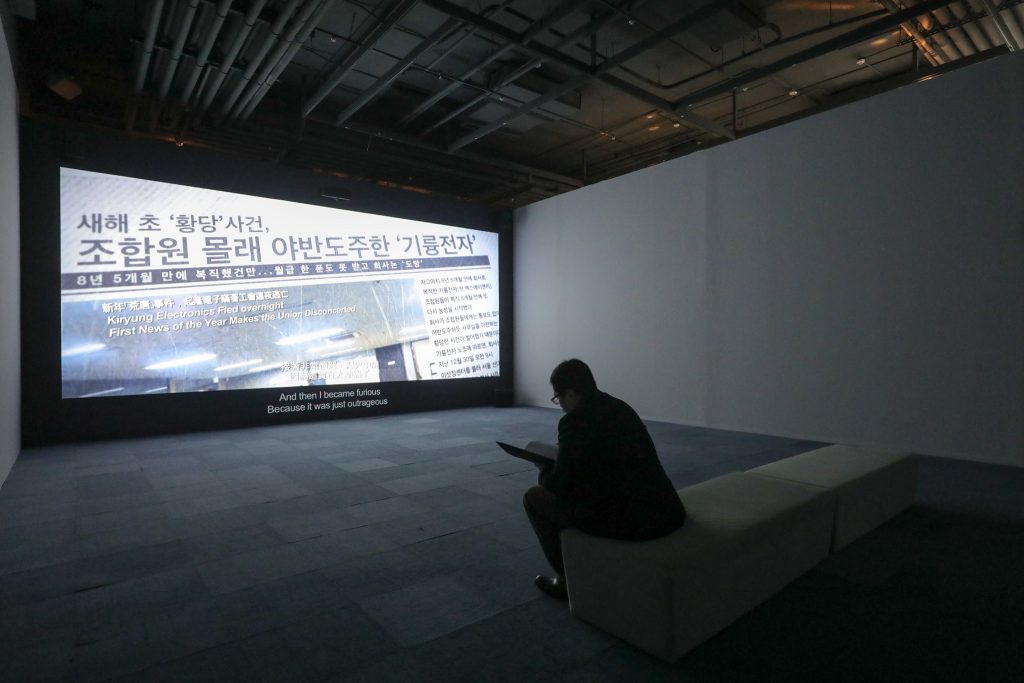Note: Industrial Complex of Guro, built in 1967, accounted for 10 % of the South Korea's exports during its heyday; with the South Korea's economic development, corporations gradually relocated to places where there was cheaper workforce, leaving numerous empty factories behind. The years from 1970s to 80s were the times when Korea's economy grew rapidly, and the female workers who devoted their youth to create such economic prosperity are, however, forgotten. Director Im Heung Soon spent three and half years making the documentary “Factory complex, 2014,” and won the Silver Lion at the 56th Venice Art Biennale in 2015; this work is invited to the exhibition Towards Mysterious Realities curated by Amy Cheng.

Photo: 張國耀; courtesy of 立方計劃空間、耿藝術文化基金會